I hope this mile-high overview will prompt you to visit the detailed pages.
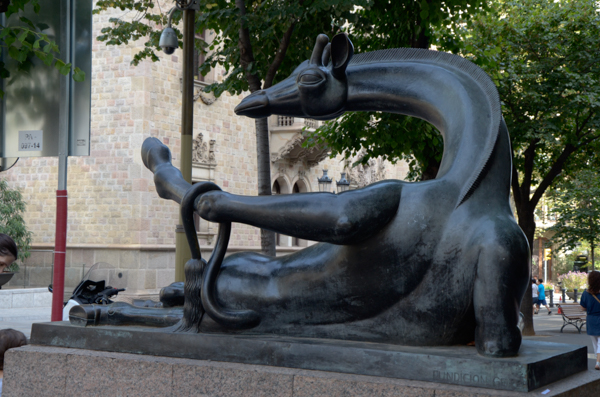 |
In order to get a head-start on jet lag, we arrived the day before the official start of the program. The main order of business was to keep awake so we spent the time wandering around the neighborhood of the hotel. This sculpture, The Coquettish Giraffe, was our favorite find. Barcelona is a city that isn't afraid to laugh at itself from time to time. |
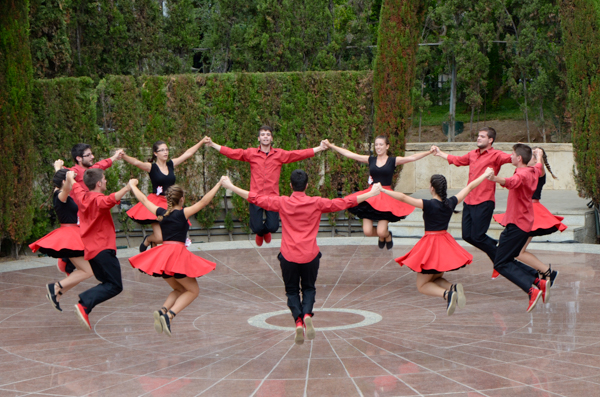 |
Our trip coincided with the annual La Mercè festival. The second day of our trip, still before the start of the official program, we used public transit to visit the gardens on Montjuïc. As part of the festival, there were celebration of various kinds throughout the city. This sardana competition celebrated the traditional Catalonian dance. The link has more info that you ever wanted to know. Even more engaging were the many activities focused on children, including tight-rope walking and trapeze instruction. That afternoon we returned to the hotel to meet the rest of our group. |
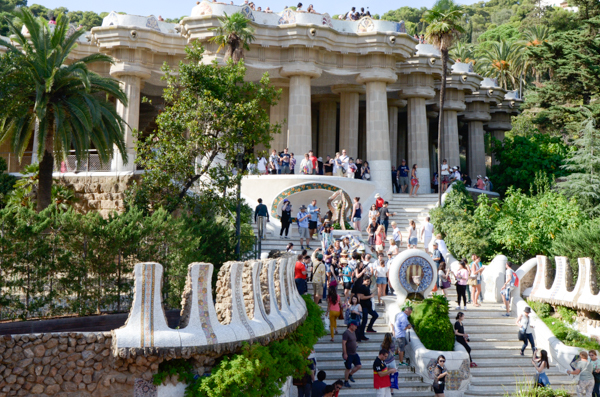 |
The highlight of our first day with the group was the Park Güell. Eusebi Güell (pronounced more-or-less like WELL), had envisioned a high-end housing development with many supporting structures designed by Antoni Gaudí. There were numerous home sites surveyed and some major works constructed, but it wasn't a successful investment. The land and public structures were turned over the city as a park. These steps ascend from the entrance gate to the open-air "hypostyle room."
|
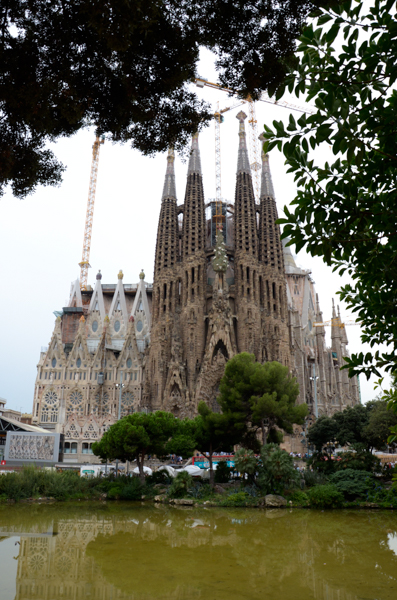 |
The morning of our 4th day, we gathered as a group and walked to the Passeig de Gracia metro station to catch the subway to La Sagrada Familia. On the way we had a brief survey of several modernisme buildings along Passeig de Gracia. The name of the church means "The Holy Family" of Jesus, Mary & Joseph. This is an example of the virtue of traveling with a group. We were able to gain early admittance to the facility without the extensive waiting line that had discouraged us on our earlier visit to Barcelona. We were eager to see the interior. |
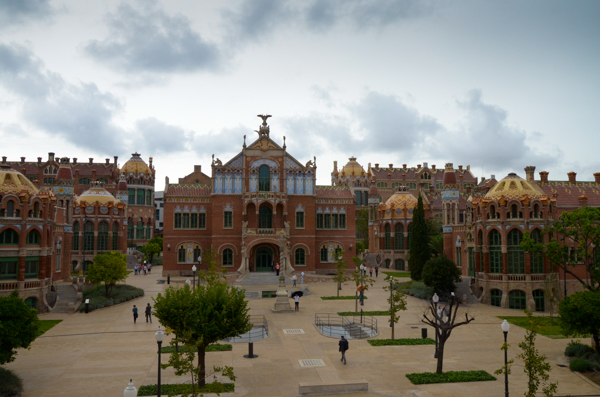 |
We used our afternoon free time to visit the Hospital de la Santa Creu i Sant Pau, within walking distance of the Sagrada Familia. The original hospital of Santa Creu (Holy Cross) was an old and over-crowded hospital that needed replacing. A rich French banker, Pau Gil, native to Barcelona, wanted to build a hospital dedicated to St. Paul (Sant Pau). The obvious answer: marry the two projects. The banker provided funding with the stipulation that the architect, Lluis Domènech i Montaner, work with a doctor to ensure that the result would be effective medically as well as aesthetically. The result was so successful that it stayed in operation as a hospital until 2009. It is now a UNESCO World Heritage Site. |
Click your "back" button to return to the previous page or click for our picture album.